#chester county
Text


This is the Glenloch mansion, located in Chester County, Pennsylvania. It was built in 1865 in the Swiss Gothic architectural style.
📸: @trail.magic.luke
#dark academia#light academia#classical#academia aesthetic#escapism#academia#books and libraries#classic literature#books#architecture#building#historical#exterior#glenloch#mansion#chester county#pennsylvania#1800s#19th century#swiss gothic#architectural#style#royal core#cottage core#aesthetics#mood#vibe#tumblr
162 notes
·
View notes
Text
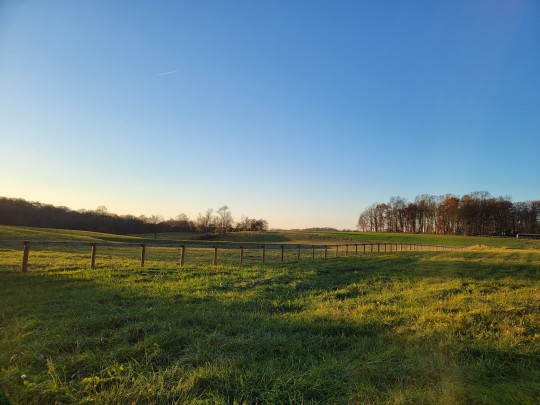
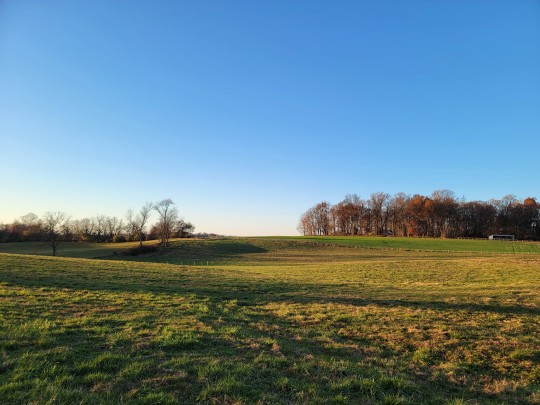
Kennett Square, Pennsylvania - November 19th 2023
#farmland#chester county#Pennsylvania#pasture technically...#photographers on tumblr#original phography#this is on a university of Pennsylvania satellite campus
18 notes
·
View notes
Text

Chester County (1962) by Andrew Wyeth
The title of the painting may refer to Tom Clark's home in Chester County. Clark lived in the oldest county in the state, and he lived simply, in a three room house without running water -- this in a region known now for the elegant suburbs of Philadelphia's Main Line. The irony of Clark's Chester County address was likely not lost on the artist. He reminds viewers of another side of the area. But Wyeth admired Clark's dignified bearing, and always saw him, too, as a dignified country gentleman. - Seattle Art Museum
6 notes
·
View notes
Photo

Landscape Fire Pit (Philadelphia)
#jindai#Ideas for a mid-sized#fully-shaded backyard with a fire pit in the fall. bluestar#chester county#aster#aster tataricus (tatarian aster)#fall bliss#blackgum
2 notes
·
View notes
Text
Williamsville AME Zion Church-Chester County, South Carolina
Williamsville AME Zion Church-Chester County, South Carolina

View On WordPress
2 notes
·
View notes
Text
Discovery of maimed kitten leads to resuce of 38 more animals from deplorable conditions in Coatesville
New Post has been published on https://petn.ws/uH3Ka
Discovery of maimed kitten leads to resuce of 38 more animals from deplorable conditions in Coatesville
Kitten wrapped in duct tape among 36 cats found in Coatesville home Roo, a 1.5 pound kitten, was found wrapped in duct tape and missing one of her front legs. She miraculously survived emergency surgery, and 38 other animals were rescued from the home she was found in. COATESVILLE, Pa. – A Coatesville resident is […]
See full article at https://petn.ws/uH3Ka
#CatsNews #Pa, #ChesterCounty, #News, #PetsAnimals, #Us
0 notes
Text
My First Visit To Marsh Creek State Park in Chester County
I was in King of Prussia in Montgomery County last weekend. I was there for both business and pleasure. My business was completed Friday afternoon and I decided to visit the Marsh Creek State Park in Chester County on Saturday morning . I wanted to get an early start but it was raining when I awoke at my hotel.. The rain delayed my hike for about an hour. It was about a 1/2 drive to the state…

View On WordPress
0 notes
Text

Commercial Retail Space available in a popular Neighborhood Shopping Center, always buzzing with lots of activity. Great visibility, signage and traffic. Inline Retail Space for lease at $17.92/sf/yr NNN. 2,879 sf with a designated customer area in front and a large open kitchen in rear. One private employee restroom and small office in rear. Tenant-controlled HVAC, Pylon Signage and 5.7 Parking Ratio. Most recently utilized as a bakery.
0 notes
Text
Cherelle Parker biography: 13 things about Philadelphia, Pennsylvania's 100th mayor
Cherelle Lesley Parker is an American politician from Philadelphia, Pennsylvania, United States. She is a Democrat.
Parker attended Lincoln University in Chester County, Pennsylvania and the University of Pennsylvania in Philadelphia. Here are 13 more things about her:
youtube
View On WordPress
0 notes
Text
Philadelphia Pool

Large modern backyard stamped concrete pool fountain concept with a rectangular design
0 notes
Photo

Rustic Home Bar - Seated Bar
An illustration of a home bar with a large mountain-style u-shaped ceramic tile floor, dark wood cabinets, a shaker sink, granite countertops, and a brown backsplash.
0 notes
Photo

Pool - Infinity
Example of a large trendy backyard stamped concrete and rectangular infinity pool fountain design
0 notes
Text
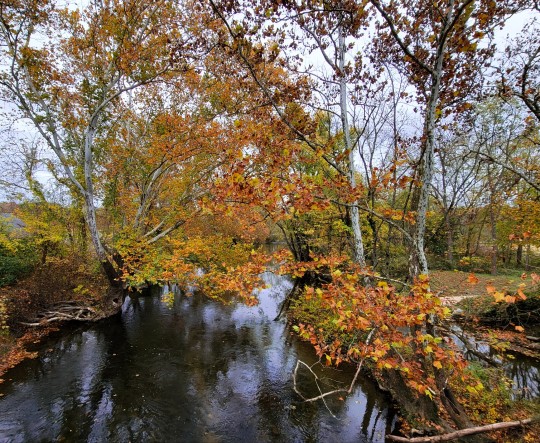
Sycamore along the Brandywine - October 23rd 2022
#Sycamore#nature#forest#brandywine creek#cheslen preserve#chester county#fall#autumn#Pennsylvania#photographers on tumblr
42 notes
·
View notes
Text
Doctor John H. Packard, his Irish servants, and generational wealth

Photos from page 570 of Physicians and Surgeons of America, page 353 of University of Pennsylvania: Its History, Influence, Equipment and Characteristics; with Biographical Sketches and Portraits of Founders, Benefactors, Officers and Alumni, Volume 2
In January 2021, I wrote about my ancestor, John Hooker Packard (my fourth cousin five times removed), noting that he has a personal estate of $5,000, arguing it had an inflated worth of $161,400, according to Measuring Worth, "putting him in the top 10% (or even higher) today", relying on calculations from CNN Money. I further noted that he became as successful as he did in his "respected profession" (a doctor) by "standing on the backs of others". In light of my recent two posts about Captain Samuel Packard and my 9th great-grandfather Samuel Packard, I decided to reassess my calculations and come to another determination in this post, and do a deeper dive into my ancestor. This goes a different direction than my post about how Dr. Packard favored gas chambers as a method to kill prisoners, focusing on Packard's wealth.
As I noted in my January 2021 post, he had at least three servants working for him (Mary Hassan, Bridget Welsh, and Ellen McBride) in 1860, and a prominent physician to say the least from my first post about him. While I could focus on his role in the U.S. Navy during the Civil War, his "radical cure" for hernia, amputation of a hip-joint, surgeons of the 19th century, oblique inguinal hernia, and urethral fistula. Similarly, there's the Report of a committee of the associate medical members of the Sanitary Commission on the subject of the treatment of fractures in military surgery with Dr. Packard as chairman, his lectures on inflammation, or anything else. [1]
This "eminent Philadelphia surgeon" was more than a person who advocated for ether to anesthesia for "brief, painful procedures" and for training of nurses. He also published a 1863 manual on minor surgery which includes methods for dulling pain and bandages, 1870 handbook on operative surgery, a 1880 book about how people can benefit from sea-air and sea-bathing, and many others. [2]
With that, let me move back to Doctor Packard and his wealth. The 1860 census which listed the three Irish servants living in his household lists a $5,000 personal estate:

1860 census document that lists three Irish servants in the Packard household
The relative value of this $5,000 dollars is best expressed as real value or real wealth, which measures the purchasing power of income or wealth by its ability to buy goods and services. That comes to $168,000.00 in 2021 values. This is not far above the median household wealth in 2021 in the U.S. is $140,800, according to the Census Bureau. It is assumed that this wealth was partially or completely passed to the children he had with Elizabeth Wood (1835-1897):
Elizabeth Dwight (1859-1915)
Charles Stuart Wood (1860-1937)
Frederick Adolphus (1862-1902)
John Hooker (1865-1947)
Francis Randolph (1870-1950)
George Randolph (1873-1936)
Elizabeth was the daughter of two Quakers, Charles S. Wood and Juliana Fitz Randolph. At age 22, she married Dr. Packard in June 1857 at Church of the Epiphany, and was likely living in Manayunk Upper Ward, Philadelphia, Pennsylvania, where she was living in 1850. By 1860 she was living in Philadelphia Ward 8 with the three aforementioned servants, Dr. Packard, her son Elizabeth D., and Charles S.W. [3]
By 1870, Dr. Packard had a real estate of $106,000 and personal estate of $2,000. His wife even had a personal estate of $10,000! There were their five children (Elizabeth D., Charles S.W., Fred H., John H., and Francis R.) and four servants. Three of these servants (Margaret Robinson, Mary Campbell, and Mary Runistell?) and one in England (George McBann). That says a lot about his wealth and it is interesting that Elizabeth has that much wealth as well. That connects to what Claire Cushman writes about in the first chapter of Supreme Court Decisions and Women's Rights: under coverture rules, implemented under an attitude known as "romantic paternalism", a woman could not make contracts, write wills, sue or be sued, or own property, as that all belonged to the husband. However, there were married women's property laws beginning to be passed in the mid-19th century, increasing the rights of married women to control their own property, but limitations remained in place. Pennsylvania passed a law similar to New York in 1845 which increased married women's property rights. [4]

1870 census listing for the Packard household in Philadelphia Ward 8 District 23, Philadelphia, Pennsylvania [5] Four servants are listed in this household, one more than in 1870.
By 1880, Dr. Packard was still listed as a physician, while his wife Elizabeth was said to be keeping house. Their daughter Elizabeth was at home, Charles S.W. was a clerk, Frederick A. was at Pennsylvania University, John H., Frank R., and George R. were at school. They were still living at 1931 Spruce Street. [6] When Dr. Packard's wife, Elizabeth, died in March 11, 1897 in Devon, Pennsylvania, her estate was said to include personal property of $10,000 and $28,000 in real estate in Chester County, Pennsylvania, as noted in a petition by her sons Frederick and Charles S.W. not long after her death. Other documents in her probate include her last will and testament on in which she left Dr. Packard "all her money in stocks, bonds, mortgages, real estate", including granted her property in Devon, along with any other personal or household property. After her death, her children renounced their right to be administrators of her estate, since she had appointed Frederick and Charles S.W. as her executors on September 20, 1896. [7] Here is the text of her last will and testament in July 1892:
I leave my property in Devon, including 13 acres, house, stable gardener's cottage, and everything belonging to the place my dear husband John Hooker Packard. He is to do as he chooses with the property, sell or rent it, and after paying off all the debts, if he sells it, to invest the principal as he sees fit and have entire control of the interest during his life time and at his death the children shall divide the some. I leave him also, that is my husband (John Hooker Packard) for his life, all the money invested in stocks, bonds, mortgages, real estate, or any other way invested that I received from my mother's estate after her death. The interest to be paid to him as long as he lives and after his death to be given to my children principal and interest share and share alike. I leave him anything that he wishes for his own use, of my household and personal property and after he takes what he wishes. I leave my son Francis Randolph Packard all that he wishes, the residence to be divided among the rest of my children. My books I leave to my husband. I wish the sum of $2,000 to be taken at once from any principal and be divided equal by between my husband John H. Packard and my son Francis R. Packard. Any money coming to me from Aunt Hannah Randolph's estate I leave to my husband John H. Packard, the same to be invested by him and for him to use the interest therefore during his life and at his death the principle to return to my children, share and share alike. [8]
Only five years after Elizabeth's death, her son, Frederick Adolphus, another accomplished doctor, would die of typhoid fever in Philadelphia on November 1, 1902, at age 40. While he married a woman named Katharine Paul Shippen on June 1, 1893 in Philadelphia, they did not have children. Unfortunately, I can't find them in the 1900 census. It also does not seem he wrote a will. So, any property he held at his death is not known. [9] However, there are indications that the wealth of Elizabeth passed on. When Dr. Packard died in 1907, it did not seem he had a probate, although he likely had substantial funds when he died in a hotel in Atlantic City. In contrast, when Elizabeth Dwight died in 1915, The Wilkes-Barre Record stated on April 7 that she gifted $500 to her brother Francis R. and had a personal estate of $40,000. In something that definitely raised eyebrows for me, the remainder of her estate was given to her friend Lucy Huston Sturdevant. The latter lived at the Hotel Sterling, which happens to be a place once managed by one of my ancestors, Robert Mills, the namesake for one of my ancestors, Stanley Sterling Mills.
Lucy was well-healed, born to a prominent family, daughter of General Ebenezer Warren Sturdevant and Lucy Huston. Her obituary in 1940 described her as a member of one of the oldest families in Wilkes-Barre, insisting that her home was in Wilkes-Barre rather than anywhere else. As it turns out, Elizabeth and Lucy were more than friends. [10] The 1900 census lists Elizabeth as the partner of Lucy, with a South Carolinian cook named Lena Brooks and a South Carolinian maid named Martha Mook living in the same household in Buncombe, North Carolina:

Elizabeth and Lucy living together in the 1900 census [11]
Although I can't find records of either one in the 1910 census, it is significant that Lucy was the executor of Elizabeth's estate. Elizabeth seems to have a bit of a high-class about herself as well, hosting tea parties with her sister, going to Nantucket, while her death certificate says she was single, just like Lucy's. According to a February 1883 passport application, Lucy was 5 foot 6 inches, had blue eyes, light hair, and fair complexion. [12] Unlike Elizabeth, Lucy was known for her short stories and articles. In 1909, only a few years before Elizabeth's death, she published a short story in Atlantic Monthly entitled "A North-West End". Then, in 1915, she published a story within in the Best Short Stories of 1915. A search of her name pulls up many other stories, either about an untrained nurse, the waterfront, flags, schools, Quaker teachers, mainly in Atlantic Monthly, now known as The Atlantic. [13]
As the internet saying goes, they're gay, good for them. I had somewhat predicted I would focus on topics like this, including a question from Christine E. Sleeter in Genealogy journal in June 2020, in a January 2021 post: "How might a family historian tease out clues of LGBTQ family members in the past?" I would be more than happy to write more about Elizabeth and Lucy in the future, and do more of a deep dive. Lucy and Elizabeth seems to have a committed relationship, a union that wasn't called marriage, but falls into the labels of "life partnerships”, “romantic friendships”, “Boston marriages” or something else entirely. Some have noted that the use of “partner” as a relationship designation in 20th-century census records is something that "might identify LGBTQ relationships", even though it is not, on its own, a "completely reliable means of identifying same-sex couples in the census" although has been used by enumerators.
Moving on from this topic, and toward the conclusion of this post, some children of Elizabeth and Doctor Packard had home values in the tens of thousands. In 1930, the home of George R. and his wife Elizabeth Waln Wistar Brown was worth $50,000. The same was the case for Francis Randolph, who was living with his wife Margaret Harshman, with a home valued the same. This differed from Charles S.W. who rented a house the same year, only worth $975 dollars. Similarly, John H. also rented a house, only worth $500 dollars. Charles and John were both wage/salary workers. [14]
In sum, you could say there was some generational wealth, i.e. any assets families pass down to their children or grandchildren, whether cash, investment funds, stocks and bonds, properties or companies, but it didn't pass to all of the children of Elizabeth and Doctor Packard, only some of them.
Notes
[1] See "On a modification of the "invagination" method of operating for the radical cure of hernia" (1895?), "On amputation at the hip-joint" (1865?), "On some of the surgeons of the last century" (1888?), "On the anatomy of oblique inguinal hernia, with special reference to the operation for its radical cure, and a description of a modified procedure for this purpose" (1895?), "Traumatic separation of the lower epiphysis of the femur" (1890?), and "Urethral fistula, treated by means of the elastic ligature" (1877?). Also see "Minutes of transcriptions and business; Sept. 29, 1857 to Apr. 14, 1887, 1857-1887" (1857, mentioned), "The present state of microscopical science, medically considered" (1859), "Sea-air and sea-bathing" (1880), "A hand-book of operative surgery" (1870), "Records, 1846-1919" (mentioned), "John Fries Frazer papers, 1834-1871" (mentioned), and "Records, 1855-1909" (mentioned).
[2] See "John H. Packard’s Primary Ether Anesthesia" (2001 article), "Training of nurses for the sick ; Social Science Association of Philadelphia ; read before the Association January 20, 1876" (his speech), A manual of minor surgery (1863), A Hand-book of Operative Surgery (1870), Sea Air and Sea Bathing (1880). Others are listed here.
[3] "Pennsylvania and New Jersey, U.S., Church and Town Records, 1669-2013" via Historical Society of Pennsylvania; Philadelphia, Pennsylvania; Historic Pennsylvania Church and Town Records; Reel: 231, page 385 of 573; "1850 United States Federal Census", Year: 1850; Census Place: Manayunk Upper Ward, Philadelphia, Pennsylvania; Roll: 808; Page: 111a, Seventh Census of the United States, 1850; (National Archives Microfilm Publication M432, 1009 rolls); Records of the Bureau of the Census, Record Group 29; National Archives, Washington, D.C.; "1860 United States Federal Census", Year: 1860; Census Place: Philadelphia Ward 8, Philadelphia, Pennsylvania; Roll: M653_1158; Page: 6; Family History Library Film: 805158, 1860 U.S. census, population schedule. NARA microfilm publication M653, 1,438 rolls. Washington, D.C.: National Archives and Records Administration, n.d. Page 723 of U.S., Encyclopedia of American Quaker Genealogy, Vol I–VI, 1607-1943, specifically Encyclopedia of American Quaker Genealogy Vol. II, lists Elizabeth as a daughter of Charles S. and Juliana. Additionally, page 404 of The descendants of Rev Thomas Hooker, Hartford, Connecticut, 1586-1908 notes her as daughter of Charles Stuart and Juliana (Fitz Randolph) Wood and says she was born May 2, 1835 in Philadelphia.
[4] "Romantic Paternalism" in Supreme Court Decisions and Women's Rights: Milestones to Equality (ed. Claire Cushman, Washington, D.C.: CQ Press, 2001), 1-2. While it is not directly stated, it is implied that Cushman wrote this section of the chapter. I originally got this book in college when I took a women in the law class. Definitely a valuable resource which I never knew I needed. The Married Women's Property Acts in the United States Wikipedia page is actually a good resource, especially citing many articles in the sources section if you wish to dive deeper into this subject.
[5] "1870 United States Federal Census", Year: 1870; Census Place: Philadelphia Ward 8 District 23, Philadelphia, Pennsylvania; Roll: M593_1393; Page: 119B, 1870 U.S. census, population schedules. NARA microfilm publication M593, 1,761 rolls. Washington, D.C.: National Archives and Records Administration, n.d.Minnesota census schedules for 1870. NARA microfilm publication T132, 13 rolls. Washington, D.C.: National Archives and Records Administration, n.d.
[6] "1880 United States Federal Census", Year: 1880; Census Place: Philadelphia, Philadelphia, Pennsylvania; Roll: 1170; Page: 206C; Enumeration District: 129, Tenth Census of the United States, 1880. (NARA microfilm publication T9, 1,454 rolls). Records of the Bureau of the Census, Record Group 29. National Archives, Washington, D.C.
[7] "Pennsylvania, U.S., Wills and Probate Records, 1683-1993", Pennsylvania Probate Record; Probate Place: Philadelphia, Pennsylvania, Notes: Wills, No 568-593, 1897, Pennsylvania County, District and Probate Courts, Pages 199 to 216. The last will and testament is on pages 202 to 206.
[8] This document is very hard to follow, so I may have missed something, but this is pretty accurate, I believe. The whole text of the last will and testament is available as a downloadable PDF. The entire will and probate in its original form and order, of all the pages, is available in a PDF here.
[9] For a profile of Frederick see pages 872-873 of Howard Atwood Kelly, A Cyclopedia of American Medical Biography: Comprising the Lives of Eminent Deceased Physicians and Surgeons from 1610 to 1910, Vol. 1 (W.B. Saunders Company, 1920). The biography of him is written by his brother, Francis R. Packard. He is also listed on page 367 of Biographical catalogue of the matriculates of the college: together with lists of the members of the college faculty ... of University of Pennsylvania within U.S., College Student Lists, 1763-1924. Katherine and Frederick having no children is confirmed by the 1910 census (Year: 1910; Census Place: Philadelphia Ward 7, Philadelphia, Pennsylvania; Roll: T624_1389; Page: 3B; Enumeration District: 0108; FHL microfilm: 1375402, Thirteenth Census of the United States, 1910 (NARA microfilm publication T624, 1,178 rolls). Records of the Bureau of the Census, Record Group 29. National Archives, Washington, D.C.) which lists Katherine as widowed and notes that she has zero children. Their marriage is noted in page 245 of Pennsylvania and New Jersey, U.S., Church and Town Records, 1669-2013 collection (Historical Society of Pennsylvania; Philadelphia, Pennsylvania; Historic Pennsylvania Church and Town Records; Reel: 232, Historic Pennsylvania Church and Town Records. Philadelphia, Pennsylvania: Historical Society of Pennsylvania. Methodist Church Records. Valley Forge, Pennsylvania: Eastern Pennsylvania United Methodist Church Commission on Archives and History.) Page 299 of Index to Wills, 1900-1924, M-S for Philadelphia within Pennsylvania, U.S., Wills and Probate Records, 1683-1993 (page 299 of 499) lists no entries for any Packards in 1901 or 1902.
[10] Although there is a Lucy H Sturdevant who married a man named Ziba M Faser in 25 Sep 1873, this is not her as she was born in 1860 and would have been 13 at the time of this marriage. For more on that Lucy, see Lucy A S Faser in the 1900 United States Federal Census, for example.
[11] 1900 United States Federal Census, Year: 1900; Census Place: Asheville Ward 3, Buncombe, North Carolina; Roll: 1184; Page: 14; Enumeration District: 0137; FHL microfilm: 1241184, Enumeration District: 0137; Description: Asheville City, Ward 3 (pt) beginning at the intersection of College and N Main, and thence NW with N Main to the City limits, thence south with City limits to Monford Ave, thence SE with Monford Ave to Haywood to French Broad Ave, thence S with French Broad Ave to Patton Ave, thence E with Patton Ave to Court Square, thence with N Main to the beginning; Includes all of Election Precinct 5, United States of America, Bureau of the Census. Twelfth Census of the United States, 1900. Washington, D.C.: National Archives and Records Administration, 1900. T623, 1854 rolls.
[12] "U.S., Passport Applications, 1795-1925 for Lucy H Sturdevant", Passport Applications, 1795-1905, 1882-1887, Roll 253 - 01 Dec 1882-28 Feb 1883, National Archives and Records Administration (NARA); Washington D.C.; Roll #: 253; Volume #: Roll 253 - 01 Dec 1882-28 Feb 1883, Volume: Roll 253 - 01 Dec 1882-28 Feb 1883, Selected Passports. National Archives, Washington, D.C.; "Lucy Huston Sturdevant" in the Pennsylvania, U.S., Death Certificates, 1906-1968, Pennsylvania Historic and Museum Commission; Harrisburg, PA; Pennsylvania (State). Death Certificates, 1906-1968; Certificate Number Range: 057301-060300, certificate number 58216, Pennsylvania (State). Death certificates, 1906–1968. Series 11.90 (1,905 cartons). Records of the Pennsylvania Department of Health, Record Group 11. Pennsylvania Historical and Museum Commission, Harrisburg, Pennsylvania. Her death certificate says she died of nephritis. Also see "1884 Dec 18 Elizabeth D Packard and Charles Packard Wife announce 5 o'clock tea on Dec 31" clipping from The Philadelphia Inquirer, Philadelphia, Pennsylvania, 18 Dec 1884, Page 3, "1915 Apr 1 Elizabeth D Packard Died March 31, 1915 of 61 West Ross Wilkes-Barre" clipping from The Times Leader, Wilkes-Barre, Pennsylvania, 01 Apr 1915, Page 24; "Obituary for Elizabeth B. PACKARD" clipping from Wilkes-Barre Times Leader, the Evening News, Wilkes-Barre, Pennsylvania, 02 Apr 1915, Page 3, "1911 May 14 Elizabeth D Packard to Nantucket for the summer" clipping from The Philadelphia Inquirer, Philadelphia, Pennsylvania, 14 May 1911, Page 27; "In her will, Elizabeth D. Packard makes Lucy Huston Sturdevant executrix of her estate" clipping from Wilkes-Barre Semi-Weekly Record, Wilkes-Barre, Pennsylvania, 09 Apr 1915, Page 8.
[13] See "An Untrained Nurse", pages 820 to 829 in The Atlantic Monthly, Volume 107, "On the Water Front" in Atlantic Monthly, "Flag-Root" in The Atlantic, Volume 112, pages 112 to 118. There's also "The Cent School" in 1903, "Two Quaker Teachers" (also see here).
[14] 1930 United States Federal Census for George R Packard, Pennsylvania, Montgomery, Lower Merion, District 0059, Year: 1930; Census Place: Lower Merion, Montgomery, Pennsylvania; Page: 2B; Enumeration District: 0059; FHL microfilm: 2341816, District: 0059; Description: LOWER MERION TOWNSHIP (PART) BOUNDED BY (N) MATSON FORD RD., WEST CONSHOHOCKEN BOROUGH LIMITS; (E) SCHUYLKILL RIVER; (S) SPRING MILL RD.; (W) COUNTY LINE RD, United States of America, Bureau of the Census. Fifteenth Census of the United States, 1930. Washington, D.C.: National Archives and Records Administration, 1930. T626, 2,667 rolls; 1930 United States Federal Census for Charles S W Packard, Pennsylvania, Philadelphia, Philadelphia (Districts 251-500), District 0292, Year: 1930; Census Place: Philadelphia, Philadelphia, Pennsylvania; Page: 10A; Enumeration District: 0292; FHL microfilm: 2341830, District: 0292; Description: PHILADELPHIA CITY, WARD 8 (PART), BOUNDED BY (N) LOCUST; (E) S. 13TH; (S) SPRUCE; (W) S. 21ST, United States of America, Bureau of the Census. Fifteenth Census of the United States, 1930. Washington, D.C.: National Archives and Records Administration, 1930. T626, 2,667 rolls; 1930 United States Federal Census for John H Packard, Pennsylvania, Delaware, Newtown, District 0105, Year: 1930; Census Place: Newtown, Delaware, Pennsylvania; Page: 15A; Enumeration District: 0105; FHL microfilm: 2341766, District: 0105; Description: NEWTOWN (NEWTON) TOWNSHIP, United States of America, Bureau of the Census. Fifteenth Census of the United States, 1930. Washington, D.C.: National Archives and Records Administration, 1930. T626, 2,667 rolls; 1930 United States Federal Census for Francis R Packard, Pennsylvania, Philadelphia, Philadelphia (Districts 251-500), District 0280, Year: 1930; Census Place: Philadelphia, Philadelphia, Pennsylvania; Page: 31A; Enumeration District: 0280; FHL microfilm: 2341829, District: 0280; Description: PHILADELPHIA CITY, WARD 7 (PART), BOUNDED BY (N) SPRUCE; (E) S. 16TH; (S) WAVERLY; (W) S. 20TH, United States of America, Bureau of the Census. Fifteenth Census of the United States, 1930. Washington, D.C.: National Archives and Records Administration, 1930. T626, 2,667 rolls.
Note: This was originally posted on Dec. 12, 2022 on the main Packed with Packards WordPress blog (it can also be found on the Wayback Machine here). My research is still ongoing, so some conclusions in this piece may change in the future.
© 2022 Burkely Hermann. All rights reserved.
#packards#generational wealth#servants#family history#genealogy#wealth#genealogy research#lineage#19th century#civil war#quakers#irish#pennsylvania#marriage#chester county#typhoid#lesbians#lgbtq#nantucket#census
1 note
·
View note
Text
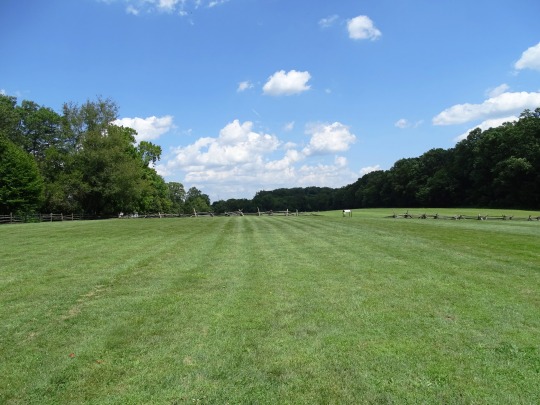



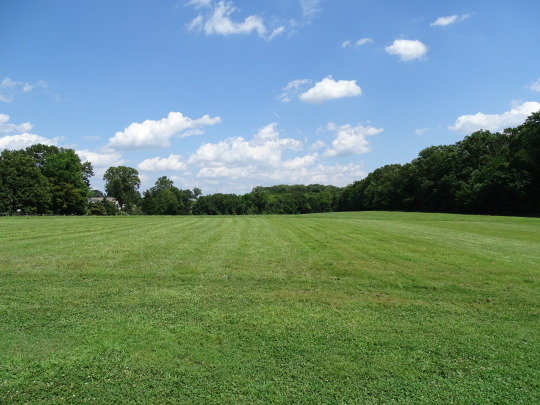
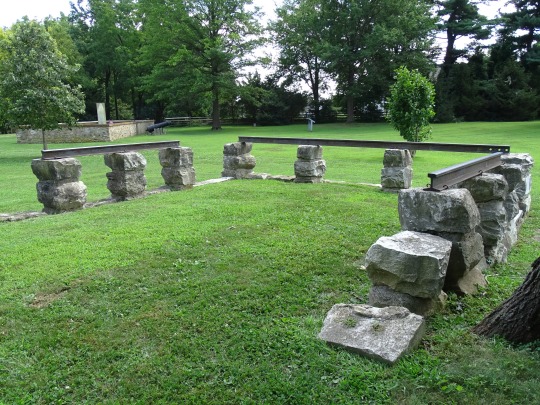

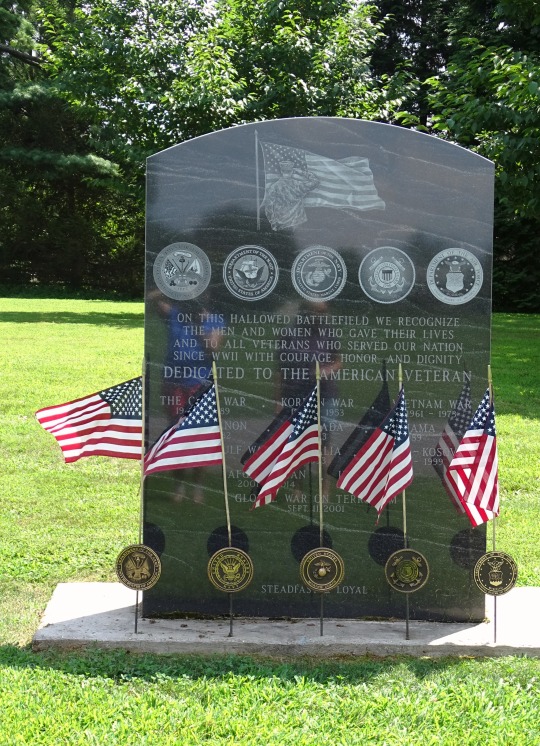






The Battle of Paoli (also known as the Battle of Paoli Tavern or the Paoli Massacre) was a battle in the Philadelphia campaign of the American Revolutionary War fought on September 20, 1777,
#Battle of Paoli#Battle of Paoli Tavern#Battle of Paoli Tavern or the Paoli Massacre#Paoli Massacre#20 September 1777#American Revolutionary War#American War of Independence#Paoli Battlefield Site and Parade Grounds#Mid-Atlantic region#Chester County#Chesco#Paoli Massacre obelisk#Malvern#Philadelphia campaign#Pennsylvania#summer 2019#free admission
1 note
·
View note
Text
Pickett-Fischel House-Chester, South Carolina
Pickett-Fischel House-Chester, South Carolina
Built in 1858 by George and Joseph Pickett, this property is a contributing property to the Chester Historic District. Notes about the house on the South Carolina Department of Archives and History state the Fischel family owned it for six generations starting in 1960. I believe this to be a typo because the Fischel family was living at the address in 1900.
1986 photo courtesy of the South…
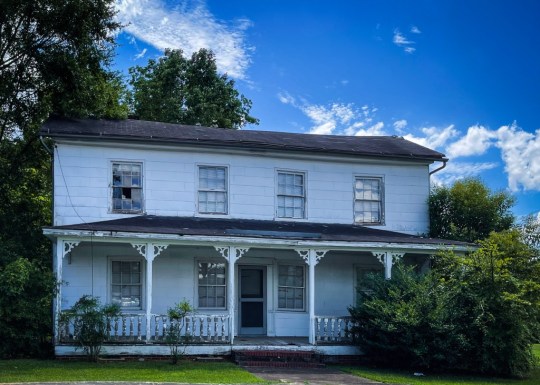
View On WordPress
2 notes
·
View notes